Catherine Cowl
02.Mar.14 / Kirsten BalleringMaterials and preparation
Yarn
- Colour A: 717 x 1 ball
- Colour B: 653 x 1 ball
- Colour C: 510 x 1 ball
- Colour D: 654 x 1 ball
Shop the yarn
You can get Cotton 8 from Scheepjes retailers, such as:
Crochet hook
3.5mm (US size E/4).
Measurements
20cm (8in) in diameter and 28cm (11in) in height. Both measurements are easily adjustable, by crocheting more pattern repeats and more rows.
Gauge/tension
Gauge is not critical for this project.
Notes
- If you want to increase the size of the cowl, use a multiple of 8+1 for the starting chain. For example, 176+1=177 chains, or 200+1=201 chains. Each added 8 chains creates an extra Catherine wheel in the pattern.
- Please note that you do not weave in the ends after changing colours. The yarn ends are used to sew the cowl ends together. So make sure to leave a 20-25cm yarn end of each colour.
- The pattern is worked in rows. After finishing your cowl, sew the short edges together to create a cowl.
- Extra instructions to clarify the pattern are displayed in italic.
Abbreviations (US terms)
- ch: chain
- ch-sp: chain-space: the space below the chains
- dc: double crochet
- dc3tog: double crochet 3 stitches together (explained in pattern)
- dc7tog: double crochet 7 stitches together
- hdc: half double crochet
- sc: single crochet
- ss: slip stitch
- st(s): stitch(es)
Crochet pattern
Row 1 With Colour A, ch 161.
Row 2 Skip first ch, 159sc, 2sc in last ch. [161 sc].
Cut Colour A. Keep in mind that you need long ends to stitch the sides together so leave a yarn tail of 20cm (8in).
Row 3 Turn your work so the yarn ends face left. Join Colour B on the right side of your work with a ss, 1sc in same st, *skip 3 sts, (3dc, ch1, 3dc) in same st, skip 3 sts, 1sc; repeat from * until the end of the row (photo 1,2) and cut yarn, turn work.
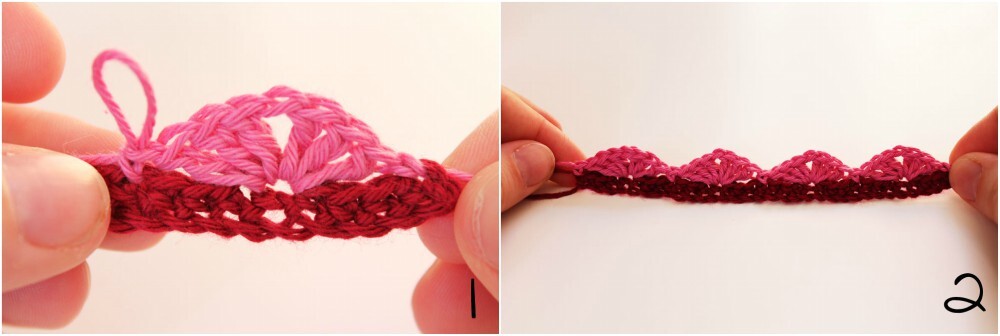
Row 4 Join Colour C with a ss in the last sc of the previous row, ch3, dc3tog through the 3 dc’s of the previous row (photo 3, arrows) as follows: *yarn over, pull up loop through stitch, yarn over, pull hook through first two loops on hook; repeat from * for the next 2 sts until you got 4 loops on your hook (photo 4). Yarn over, pull hook through all loops, finishing the dc3tog. Continue with *ch7, dc7tog (photo 5, arrows); repeat from * until there are 3dc’s remaining, ch7, dc3tog, 1dc in sc of previous row, turn work. (photo 6).
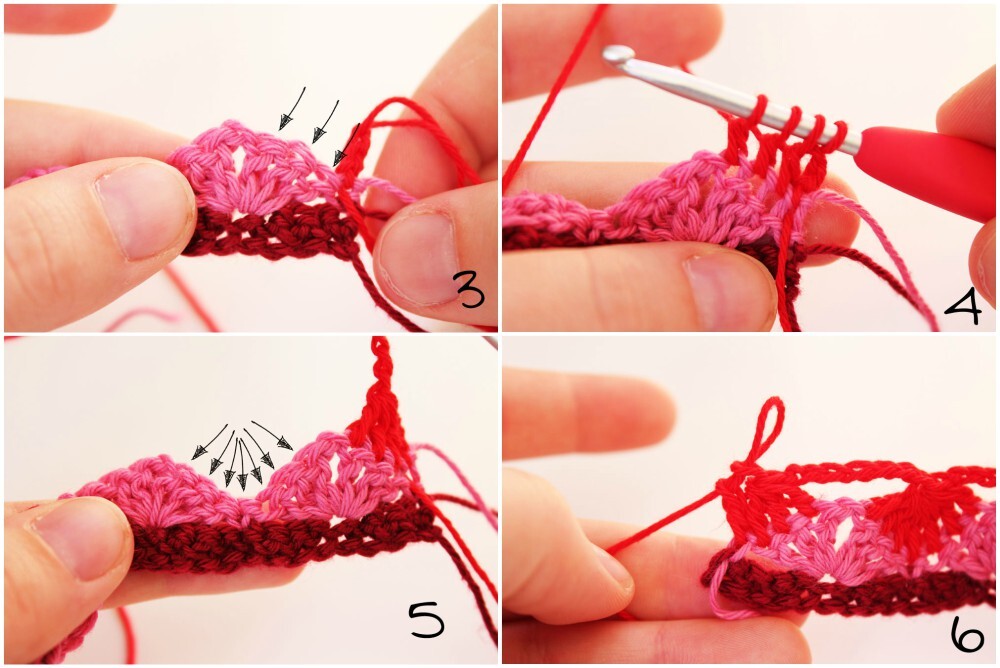
Row 5 Ch3 (counts as first dc), 3dc in gap of dc3tog of previous row, 1sc in ch-sp two rows below. You’ll encase the 7 chains in your sc (photo 8). *(3dc, ch1, 3dc) in the gap of the dc7tog, 1sc in next ch-sp; repeat from * until you’ve made your last complete wheel, 3dc in the gap of the dc3tog of the previous row, 1dc in the 3rd ch of your starting dc (photo 9). Cut yarn, turn work.
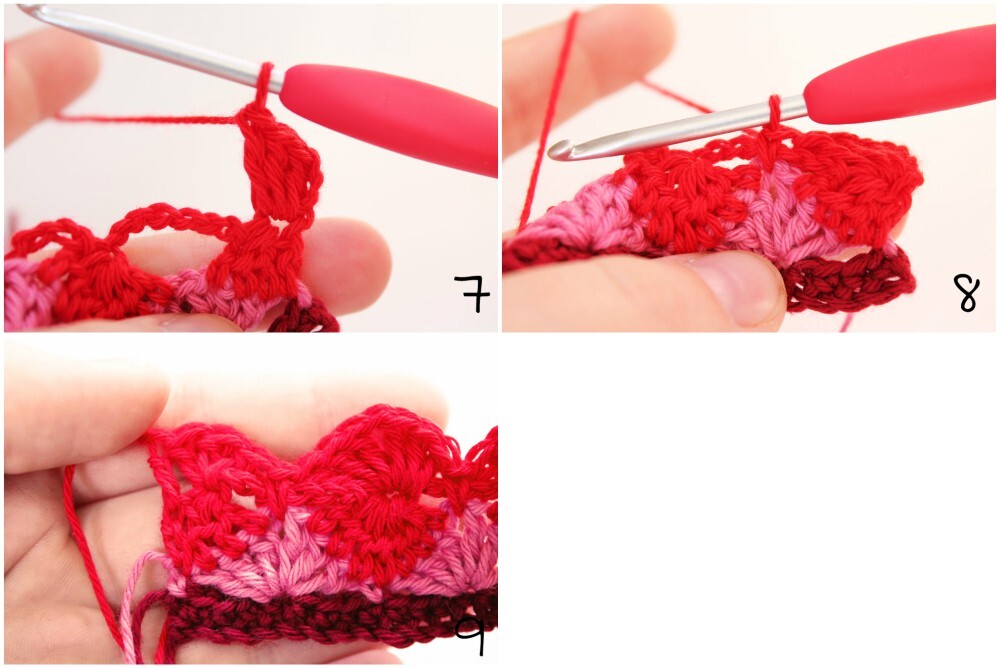
Row 6 Join Colour D with a ss in the last dc of previous row, 1sc in same st, ch3, *dc7tog (photo 10), ch7; repeat from * until you’ve got one complete wheel left, dc7tog, ch3, 1sc in 3rd ch of starting dc of previous row, ch1, turn.

Row 7 1sc in sc of previous row, *(3dc, ch1, 3dc) in dc7tog, 1sc in ch-sp; Repeat from * until the end of the row. Cut yarn, turn work.
Row 8 Repeat Row 4 with Colour A.
Row 9 Repeat Row 5 with Colour A.
Row 10 Repeat Row 6 with Colour B.
Row 11 Repeat Row 7 with Colour B.
Rows 8-11 form the stitch pattern. Repeat the stitch pattern until you’ve made 31 rows in total, alternating Colour A, B, C and D or until your cowl has the desired height. When you’ve decided that your cowl is high enough, you need another row to straighten the top.
Final row Join Colour A with a ss in the last dc of previous row, 1sc in same st, ch3, *dc7tog, ch3, sc in ch-sp, ch3, 1sc in gap of dc7tog; repeat from * until you’ve worked an sc in the final wheel, ch3, 1sc in 3rd ch of previous row. Cut yarn.
Edge
Now you have a large, rectangular cowl with straight edges! But since we’ve ended with two different colours on both sides, the colour schemes for the edging is different on each side.
Top edging (side we were already working on)
The edging consists of a few rows of sc and a picot edging. The picot edging works with a multiple of 4, so we need to decrease 1 stitch in the edging. Please note that we will only work from right to left in the edging, so don’t turn your work but cut your yarn after each row and join it on the right side again.
Row 1 Join Colour B with a ss in the first st, 1sc in same st, *3sc in ch-sp of previous row, 1sc in dc7tog, 3sc in ch-sp, 1sc in sc of previous row; repeat until the final ch-sp, 2sc in ch-sp, cut yarn. [160 sc]
Row 2 Join Colour C with a ss in first st, 1sc in same st, 159sc. Cut yarn.
Row 3 Repeat Row 2 with Colour D.
Bottom edging (side with the starting chain)
Please note that you also don’t turn your work while making the bottom edge so cut your yarn every row and join it on the right side. The bottom side is already made out of 160 chains, so you don’t have to decrease here.
Row 1 Join Colour C with a ss in first beginning ch, 1sc in same st, 159sc. Cut yarn. [160 dc]
Row 2 Join Colour D with a ss, 160sc, cut yarn.
You now have a similar edging on both sides.
Picots (final row of both top and bottom edging)
Make a picot as follows: ch2, put your hook through the 2nd ch from hook, yarn over (photo 11), pull the hook through all loops on hook.
Picot row Join Colour A with a ss in first st, 1sc, (1hdc, picot, 1hdc) in same st, 1sc, *1ss, 1sc, (1hdc, picot, 1hdc) in same st, 1sc; repeat from * until the end of row (photo 12). Cut yarn.
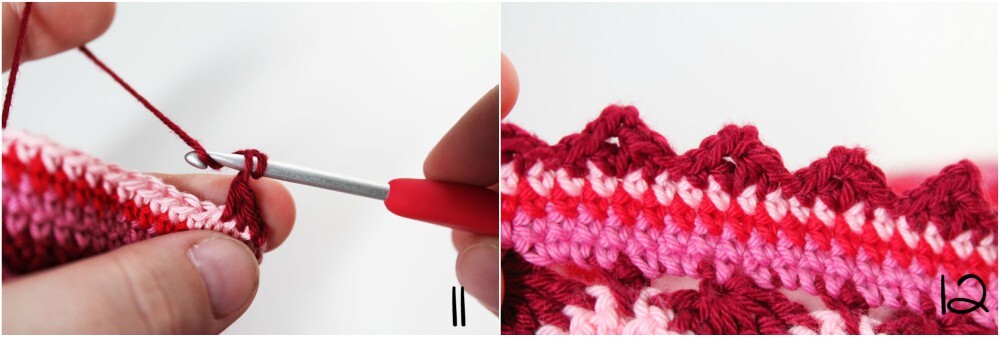
Blocking
You’re done with the largest part already! Now we just need to block it before we start closing up the cowl. This yarn really benefits from blocking because a) it gets softer, b) the pattern definition is enhanced by it and c) the cowl will stay in shape. You might have noticed that the Catherine wheel is a tight stitch. When you start with 80cm of chains, the middle of cowl is only 65cm. Wet blocking will largely correct this. For blocking instructions, please check my blocking tutorial. Make sure to pay extra attention to the points of the picot, as you can see in the picture below.
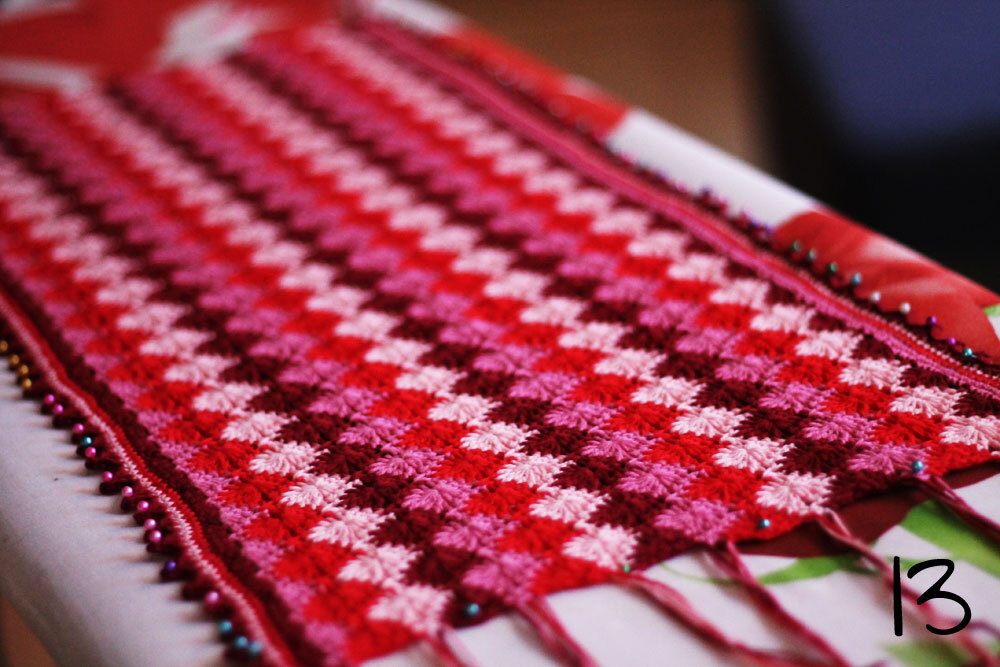
Now only the sewing remains! Place the short ends of the cowl next to each other, and using your yarn tails, sew the stitches of each row together. Weave your yarn end through the outermost part of the stitch on the other side of the row. It’s not the most exciting part of the pattern, but if you do it neatly you’ll be happy afterwards. You barely can see the seam this way (check the picture below)!
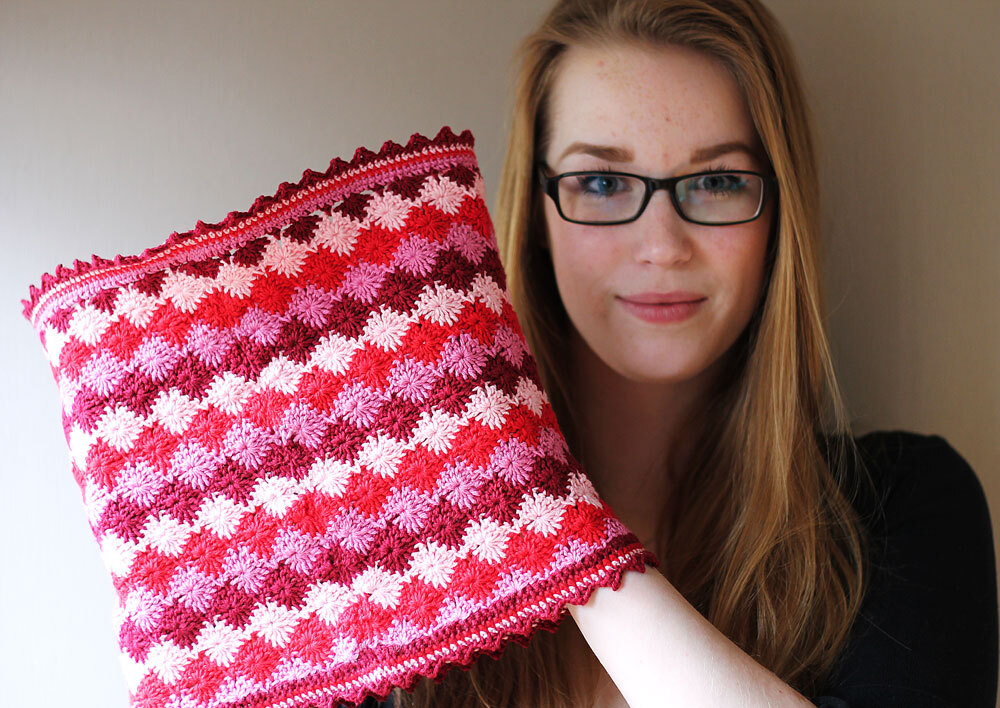
Diagram
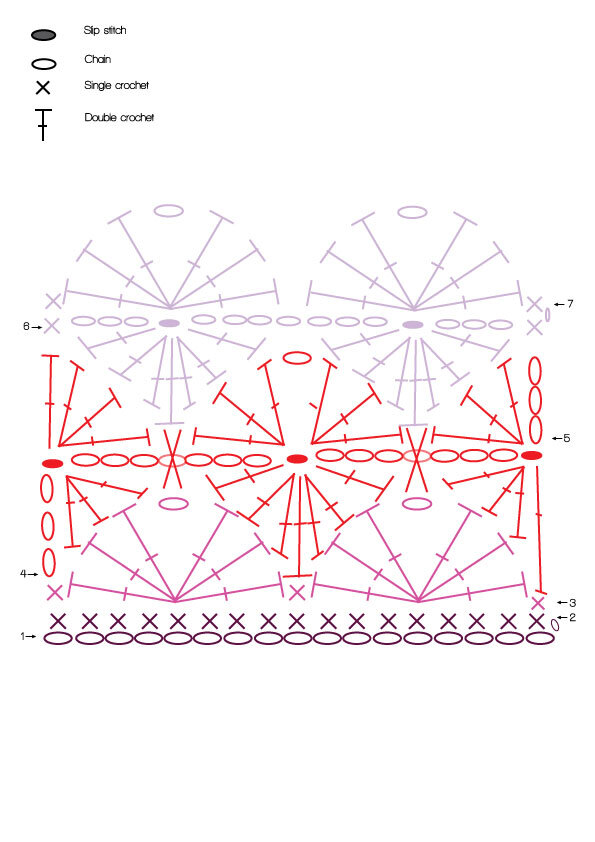




Comments